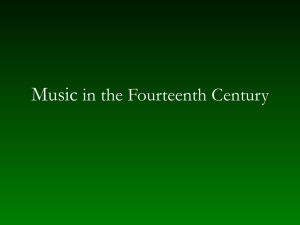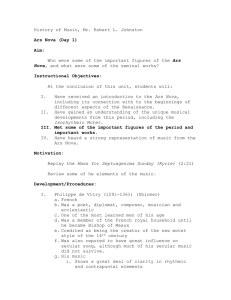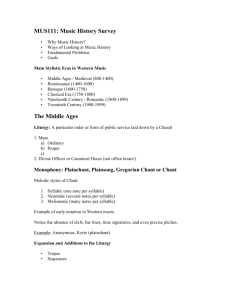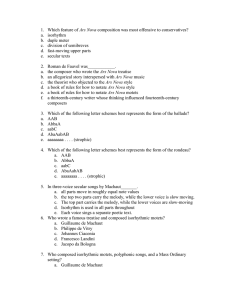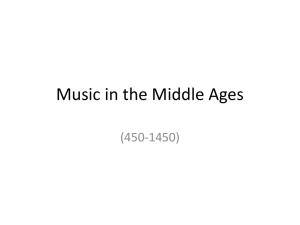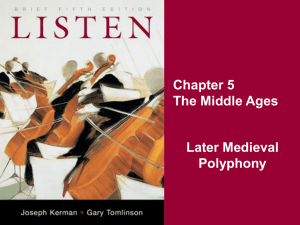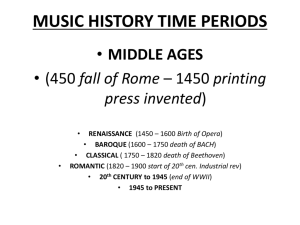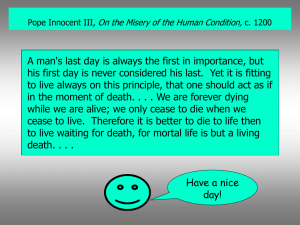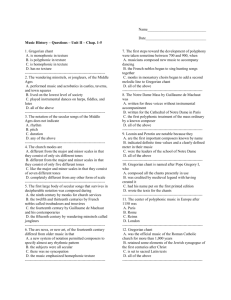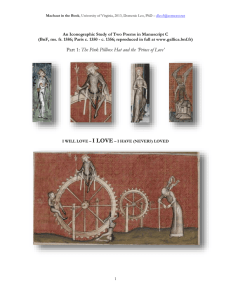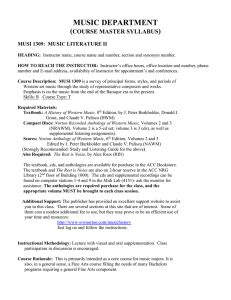14th Century and Ars nova –Week 4 General Historical Events And
advertisement
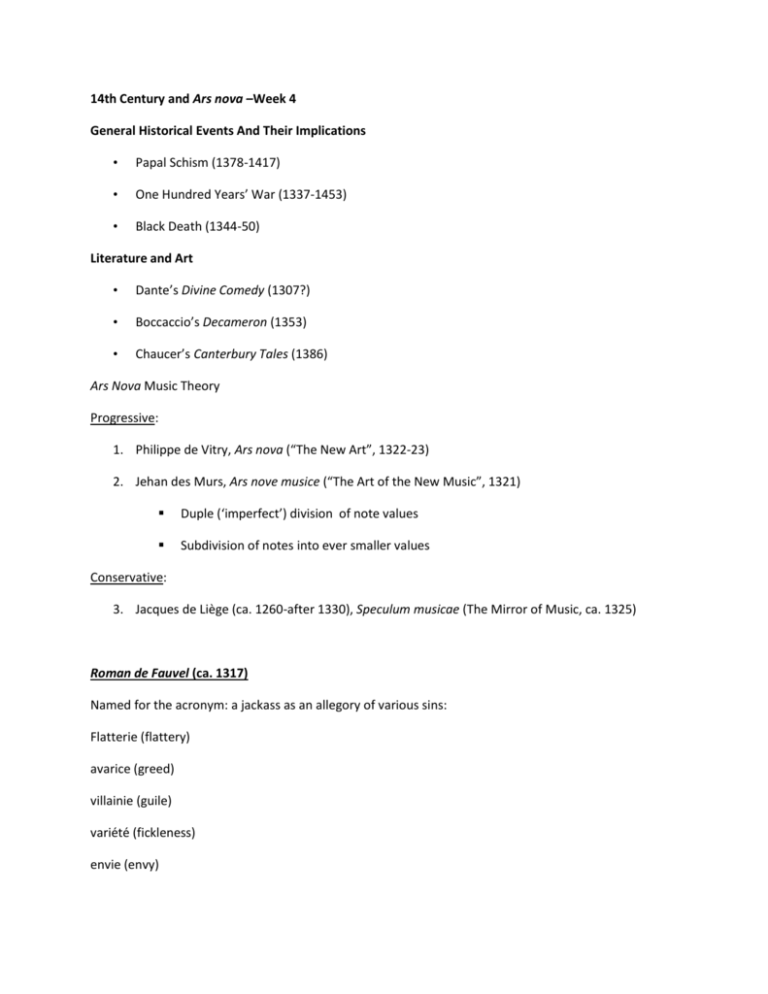
14th Century and Ars nova –Week 4 General Historical Events And Their Implications • Papal Schism (1378-1417) • One Hundred Years’ War (1337-1453) • Black Death (1344-50) Literature and Art • Dante’s Divine Comedy (1307?) • Boccaccio’s Decameron (1353) • Chaucer’s Canterbury Tales (1386) Ars Nova Music Theory Progressive: 1. Philippe de Vitry, Ars nova (“The New Art”, 1322-23) 2. Jehan des Murs, Ars nove musice (“The Art of the New Music”, 1321) Duple (‘imperfect’) division of note values Subdivision of notes into ever smaller values Conservative: 3. Jacques de Liège (ca. 1260-after 1330), Speculum musicae (The Mirror of Music, ca. 1325) Roman de Fauvel (ca. 1317) Named for the acronym: a jackass as an allegory of various sins: Flatterie (flattery) avarice (greed) villainie (guile) variété (fickleness) envie (envy) lâcheté (cowardice) Roman de Fauvel (ca. 1317) Manuscript: Secular polyphonic music (rondeaux, ballades, plainsong, chanson-refrains) Sacred polyphonic music (motets, including five of three-part motets by Philippe de Vitry [1291-1361]) Isorhythm = equal + rhythm A compositional processed based on on two recurrent elements in the tenor: • melodic (color, colores) • rhythmic (talea, taleae) Isorhythmic Motet They are secular, achieve greater length, are more complex rhythmically, employ such devices as hocket, and are pan-isorhythmic Hocket: (Hoquetus = “Hiccup”): A rhythmic device whereby a melodic line is split alternation between two voices. in quick Example: Philippe de Vitry, In arboris — Tuba sacre fidei — Virgo sum (ca. 1320) [NAWM 24] Guillaume de Machaut (1300-77) Machaut’s secular music: Machaut composed monophonic and polyphonic music to formes fixes. Formes fixes (fixed forms). Music and poetry are formally governed by particular patterns of repetition determined by the poetic genre. Forms include: Ballade or Cantilena Style: A texture in which the treble voice carries the text, with the lower voices most often performed instrumentally. Virelai (Abba…A) Ballades (aabC) Example: Guillaume Du Fay (ca. 1397-1474), Resvellies vous (ca. 1423) [NAWM 35] Rondeau (ABaAabAB) Example: NAWM 26, Guillaume de Machaut (ca. 1300-1377), Rose, liz, printemp, verdure (ca. 1350?) [CD 2/35] Italian Trecento Music Trecento=14th century; Quattrocento=15th century, etc. Squarcialupi Codex (copied ca. 1420) 1. Madrigal Example: : Jacopo da Bologna, Non al suo amante (ca. 1360) [NAWM 28] 2. Caccia (=French chace) 3. Ballata (=French virelai) Poetic form: ripresa stanza (2 piedi + volta) ripresa Poetic lines: 1 2 3 4 5 6 7 8 9 10 1 2 3 Music: A b A b a Example: Francesco Landini, Ballata: Non avrà ma’pietà (ca. 1380?) [NAWM 31]
